| Umělec magazine 2005/3 >> Koschei the Deathless, Mermaid, and other… | List of all editions. | ||||||||||||
|
|||||||||||||
Koschei the Deathless, Mermaid, and other…Umělec magazine 2005/301.03.2005 Natalia Filonenko | Ukraine | en cs de es |
|||||||||||||
|
Painting is probably one of the oldest forms of cultural communication. This is why the different stages of its fate - failure or end, return or success - are all the time the focus of attention of the artistic world. Today, interpretation of painting evolution is more complicated than that of relatively new genres such as photo or video as it has always been a rule to refer the action on canvas to the context of centuries-old history of art. However recently, obvious changes have begun to show as more and more curators and fine art experts appear who do not consider such contextualization so necessary. Painting is entitled to exist due to at least two reasons: first, it is only painting that keeps the aura of original and unique work of art; second, it remains an effective means of transformation of other images.
In the times of media expansion, contemporary painting is regarded as a frontier phenomenon between pure painting and new media. The total domination of media has radically changed the forms of reflection and transmission of reality; a system of mediators stands between our perception and the empiric world, which they distort and transform and thrust their own images on us. So, on-screen and virtual contacts are more real than direct perception of reality and informational stream forces out the cultural one in artists' perception. Painting turns into another media surface that is activated by the same impulses. The function of an artist including a painter can be compared to the role of a DJ or VJ, which is a masterly mixing of various informational streams. Artists offer their comments on somebody else's comments and thus, produce a term "reappropriation." Artists use both ready and own photo images showing interest in endlessly mixing interrelations between every possible forms of creation of a final image, from pictures and photos to television and cinema. In this connection I would like to mark a change of such notion as "ready made." It is not anymore limited by a ready object or image; any space – either social or virtual - can be "ready made" for an artist. An artist turns from a user of culture and information into an analyst who borrows and manipulates various forms, signs, images, and subjects. Ukrainian artist Alexander Gnilitsky states, "It is not important what sources authors use. The main thing is to receive a picture in the end." Modern painters do not have pretensions of authenticity and share the opinion that one should not believe what he sees. Painting is not just a quiet corner in the densely populated media landscape and it cheats us as well as the television does. Vasily Tsagolov in his pictorial series imitates and parodies a widespread primitive method used in mass culture, in particular, in western movies that is appearance of unusual characters in everyday life or, vice versa, transference of characters to unexpected context. In a series Ukrainian X-Files (2001-2004), the artist transfers paranormal phenomena to a Gogol-like Ukrainian village. Here, an academic manner is a universal means of fantastic narration as well as video or photo and the most convenient for showing the viewers the scenes of "contacts" with aliens against the background of the magnificent Ukrainian nature. In the next series Russian X-Files (2004), the action takes place in Moscow Metro, which has recently become a zone of danger for Muscovites. The author combines reality and fairy tales: his characters are personages of Russian tales well-known from the childhood such as Baba Yaga, Koschei the Deathless, and the Nightingale Bandit who now reside in dark and dangerous subway labyrinth. Tsagolov offers liberation from mass fears of an abstract image of evil as he replaces the images of present-day terrorists with fairy images from Soviet movies, which are amusing rather than terrifying. Baba Yaga and Koschei conjure away evil spirits from their underground. Notwithstanding the apparent "cinema-mania" Tsagolov deliberately abandons screen aesthetics and minimizes special effects so that not to destroy the structure of the Picture. He preserves a characteristic pictorial field as if torn into separate strokes of paint-brush however his palette changes in accordance with the new content. A tendency in contemporary Ukrainian painting that is reflection on infantilization of contemporary mass culture is worth noticing today. Considering today's mass passion for fairy tales the characters of Harry Potter, Lords of the Ring, or Shrek are highly competitive with the heroes of Matrix and Terminator or may be even more popular. It is not by accident that in many Ukrainian studios you can find works, in which fairy and fantastic subjects and characters prevail. Passion for mythology and, to some extent, fairy tales resided in Ukrainian art even in its postmodern period in the beginning of 90s. Now as before many artists offer direct citations and combination of various methods and contexts however on different technological and semantic levels. Still, as distinct from postmodernism they more often borrow information for their mixes from the screens and glossy magazines rather than from the history of arts. It is interesting that "other" realities created by Ukrainian artists are very far from so popular aesthetics of digital space. Cynical romantic Alexander Gnilitsky rouses the curiosity of the viewers by passing over in silence rather then making evident statements. Siamese twins fly in one space-suit in cosmos; Treerorist demonstrates his fingerprints; the author himself flies on the magic carpet; a mermaid divides her tail in half beside a sunk ship as she wants to go to a disco. Everybody's favorite cartoon film about Cheburashka and Crocodile Gena becomes a theme for the whole series. His works whose language and themes are always different can probably be united by mysterious reticence. In his picture Mermaid the artist seems to recode a habitual romantic and sorrowful image of the mermaid. According to the author's will, she offers her "identity" in sacrifice. The image is not sharp: obscure and underwater manner slurs over the terrible details of the picture and turns everything, even blood-streams in the water, into decorative elements. Gnilitsky addresses Art Deco style and Japanese engraving simultaneously using the aesthetics of hara-kiri and blood-flow representation of the latter. Arsen Savadov's queer reality is deeply rooted in post-Freudism. His works include the obvious elements of surrealism, in which "dreams and reality" flow together. A gigantic spoon that digs out stones paradoxically appears in a natural landscape; gigantic mushrooms radiate some unknown red waves. Savadov all the time violates the laws of reality in his paintings and photos. He actively uses methods of surrealism that have already become universal, for example, logical incompatibility of characters and objects with their environment. A certain set of significant elements in his works regularly arises. They either appear in different paintings or, suddenly, unite as in his picture Artist's Day. It should be noted that famous Hollywood and literary characters rarely appear in Ukrainian artists' works. The subjects of their paintings prove that today's "rehabilitation of childhood" is concerned with figures that are familiar from the childhood. A conclusion arises that fantastic and fairy motives in Ukrainian painting are not the direct reflection. They exist at the same time with the processes that take place in Western culture. Ukrainian works are concordant with the world art process while the motives and forms offered by the authors are often different as they grow on a different socio-cultural ground. "Infancy" of a Ukrainian art, according to Arsen Savadov, is not a tribute to Western fashion to use fairy subjects and special effects but manifestation of protective mechanisms of consciousness under conditions of their social uselessness. He believes that painting is still a hobby rather than profession and the artists use this easy and complex genre as a means of personal recreation.
01.03.2005
Recommended articles
|
|||||||||||||
|
04.02.2020 10:17
Letošní 50. ročník Art Basel přilákal celkem 93 000 návštěvníků a sběratelů z 80 zemí světa. 290 prémiových galerií představilo umělecká díla od počátku 20. století až po současnost. Hlavní sektor přehlídky, tradičně v prvním patře výstavního prostoru, představil 232 předních galerií z celého světa nabízející umění nejvyšší kvality. Veletrh ukázal vzestupný trend prodeje prostřednictvím galerií jak soukromým sbírkám, tak i institucím. Kromě hlavního veletrhu stály za návštěvu i ty přidružené: Volta, Liste a Photo Basel, k tomu doprovodné programy a výstavy v místních institucích, které kvalitou daleko přesahují hranice města tj. Kunsthalle Basel, Kunstmuseum, Tinguely muzeum nebo Fondation Beyeler.
|








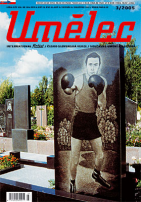















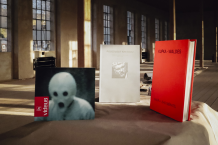




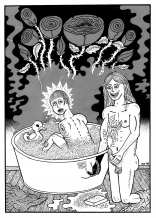
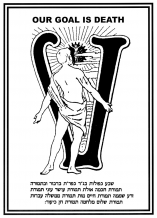
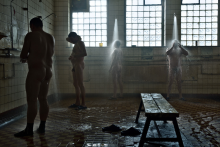
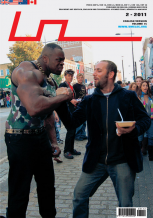


 New book by I.M.Jirous in English at our online bookshop.
New book by I.M.Jirous in English at our online bookshop.
Comments
There are currently no comments.Add new comment